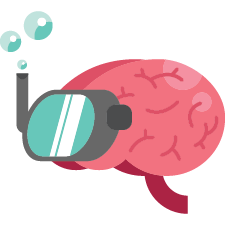安装 Steam
登录
|
语言
繁體中文(繁体中文)
日本語(日语)
한국어(韩语)
ไทย(泰语)
български(保加利亚语)
Čeština(捷克语)
Dansk(丹麦语)
Deutsch(德语)
English(英语)
Español-España(西班牙语 - 西班牙)
Español - Latinoamérica(西班牙语 - 拉丁美洲)
Ελληνικά(希腊语)
Français(法语)
Italiano(意大利语)
Bahasa Indonesia(印度尼西亚语)
Magyar(匈牙利语)
Nederlands(荷兰语)
Norsk(挪威语)
Polski(波兰语)
Português(葡萄牙语 - 葡萄牙)
Português-Brasil(葡萄牙语 - 巴西)
Română(罗马尼亚语)
Русский(俄语)
Suomi(芬兰语)
Svenska(瑞典语)
Türkçe(土耳其语)
Tiếng Việt(越南语)
Українська(乌克兰语)
报告翻译问题


























I assumed the game ended up being about "The End of the World" as I was aware of the idea the Process existed outside of cloud bank. I assumed Cloud bank just happened to be where the issue started... and would be where it ended since the cradle existed there. Once the process cleared cloud bank... it could be assumed there was nowhere else left as the process begins and ends at the cradle... at least that is what i assumed.
So Red... would then be the last living being... until she chose to join the Narrator inside the Transistor.
I always feel Melancholy when i hear the music for this game but never skip it because i think its important we feel such emotions to help us remember the little time we have left.
Essentially it was a vulnerability in the Transistor code. That's what you got when end users start building instruments for themselves.
I definitely got the impression that even the "real" world was actually a simulated one.
Transistor created another Matrix/Cloudbank inside of itself, with another virtual Transistor inside of it. And Royce says "We are not going get away with this, are we?" because now HE realizes that he, Red and all the people who died in Cloudbank are actually going to relive the simulation again starting from the point where Transistor was corrupted, causing recursion and "stack overflow" (at the moment of Kamerata killing the Voice guy).
To me it's 99% canon in my head, there is way too many weird and intricate details inside the game that make Cloudbank look virtual.
A lot of text inside the game, descriptions of the Cloudbank and Terminals imply as if users in real world have ability to decide (or are forced by some reasons) to join this high virtual society where you can be anything, vote for weather, nobody has to be poor, homeless or sick. It's endless life, joy and beauty (aka Rapture idea from Bioshock). So people in real world select their specialization (e.g. they decide who they can be in this virtual world), then they "connect" to the Cloudbank as to Matrix and forget that they're inside simulation.
Transistor acts as a "cheat code", something like telephones from Matrix, that you can use to go back to real world or, in this case, alter Cloudbanks reality. Now, all of the text in this article is correct, because of in-game events and Sybil the Transistor was corrupted and things happened.